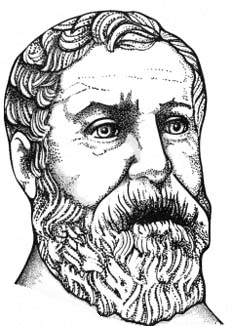Imaginary Numbers are Real!
Published 11/10/24 - Alex
Some of us probably remember this weird concept we learned in highschool mathematics and maybe never used again called Imaginary Numbers
Chances are we heard the fact that they are called imaginary which dosnt exactlly give any ideas of practicality and never cared to learn more about them after getting through algebra II
The name imaginary is kind of funny because its completly wrong. This is called a misnomer and it is this way because way back in the day mathematicians thought it could never have a use
Lets review what Imaginary Numbers are

If you dont remember what these are thats ok lets do a quick refresher. Imaginary numbers are what appears when we try to take the square root of a negitive number. The square root is the oppisite of multiplying a number by itself or like saying what number multiplied by itself gets me that number. Those who remember pre-algebra remember that both positive and negitive numbers times themselves are positive so how can we have a negitive expression under the square root. Eventually we decided to represent these negitive square roots as their own numbers so we called the square root of -1 "i". From this we can represent the square root of any other negitive number. For example sqrt(-4) = 2i
This is a question that many mathmaticans were confounded by and we'll discuss how these were discovered and why they were used
Lets go back in time

The history of imaginary numbers is actully very interesting and involves a number of mathematicians, but the one that is credited for adpoting and introducing the concept is Rafael Bombelli in 1572 who came up with the modern i notation
The concept however was created much earlier by mathematicians notably the ancient greek mathematican and engineer Heron of Alexandria. Bombelli first established rules for multiplication of complex numbers. The great mathematican Leonhard Euler also played a role in popularizing the acceptance and idea of these numbers as well as Augustin-Louis Cauchy and Carl Friedrich Gauss
Now in highscool what we probably learned is i^2 = -1 and powers of i go between patterns of 1 i -1 and -i. When we combind imaginary and real numbers as we call them we get complex numbers. And thats probably about all you learned!
Imaginary numbers are not "Imaginary" many people like to think of them as "lateral" numbers existing beside our other real numbers

And were about to dive into why these are so real!
First of all lets explore some of the many, many uses in math and science that have helped shape our modern world

Ah yes we couldnt talk about imaginary numbers without euler's identity considered one of the most beautiful equations in all of mathematics! If you took precalculus or beyond or any engineering or computer science classes you may have learned this
This shows the relationship between 5 important constants i, pi, e, 1, and 0

e raised to the power of i times pi + 1 = 0. Take a look at our lesson on euler's identity in our precalculus section of the website if you would like to learn how and why this makes sense but this is certinly one use
Euler's Identity and complex numbers in general come up a TON in electrical engineering & signal processing. On top of that this identity has uses in mathematics in general which can be applied to almost anything. This basiclly provides a language for polar coordinates and periodic related problems
Thats just euler's identity i can also be used in some of the most important branches of science such as quantum and theoretical physics. They are used to describe the behavior of nature on the quantumly small scale and describe periodic functions in theroretical physics
They are also used to describe electromagnetic waves such as light for example. Many important things like Maxwell's Equation involve the used of these complex or imaginary numbers
They are also used for alternating currents. One specific example of their use is say calculating the flow of air over an airplane wing
And there are so many more uses on top of that. I hope this has helped you understand that these imaginary numbers are very much a part of our world!
